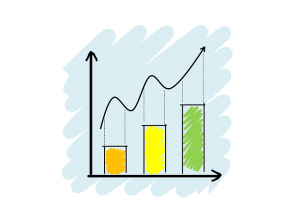Sources of Error in Measuring Precipitation
Measuring precipitation accurately can be challenging due to various sources of error. These errors can impact the reliability and quality of precipitation data. Here are some common sources of error in measuring precipitation:
Instrument Errors:
Errors can occur due to limitations or malfunctions of the measuring instruments. Rain gauges, for example, may suffer from calibration issues, improper installation, or physical damage, leading to inaccurate readings. Snowfall measurements can be particularly challenging, as snow can melt or evaporate during collection, resulting in an underestimation of precipitation.
Wind Effects:
Wind can cause errors in precipitation measurement by altering the collection and distribution of rain or snow. High winds can result in an undercatch, where a significant amount of precipitation is missed by the rain gauge due to wind-induced splashing or blowing. Wind also affects the accuracy of snowfall measurements, causing drifting or uneven accumulation.
Evaporation and Sublimation:
Precipitation can evaporate or sublimate before or during measurement, particularly in arid or windy conditions. This can lead to an underestimation of actual precipitation amounts, especially for light or intermittent rainfall events. It is a significant challenge in regions with high evaporation rates or where sublimation of snow is prevalent.
Spatial Variability:
Precipitation can vary spatially, meaning that different areas within a region may receive varying amounts of rainfall. This can introduce errors when using point measurements to represent larger areas. The density of rain gauges or weather stations may not be sufficient to capture the true precipitation patterns accurately.
Measurement Frequency:
The timing and duration of precipitation events can influence the accuracy of measurements. If the measurement interval is too long or if frequent small rainfall events are missed, the recorded data may not reflect the true precipitation patterns. Ideally, measurements should be taken at regular intervals and for an adequate duration to capture the variability of precipitation events.
Environmental Interference:
Environmental factors, such as trees, buildings, or mountains, can obstruct the collection of precipitation in rain gauges, leading to underestimation. Surrounding structures or vegetation can cause splashing or dripping, affecting the accuracy of measurements. It is important to ensure that the measurement location is free from obstructions that could interfere with the collection of precipitation.
Measurement Errors:
Human errors during the reading or recording of precipitation data can introduce inaccuracies. Mistakes in recording the data, transposing numbers, or reading the instruments incorrectly can lead to errors in the reported precipitation amounts.
Sources of Errors in Non-Recording Gauge
- Some water is used to wet the surface of the instrument.
- The rain recorded may be less than the actual rainfall due to the direction of the rainfall as affected by wind.
- Dents in the collector and tube may also cause errors.
- Some water is absorbed by the measuring stick.
- Losses due to evaporation can also take place.
- The volume of the stick replaces some water which causes some errors.
Sources of Error in Tipping Bucket Type Rain Gauge
- Dents in the collector.
- Moistening of the inside surface of the funnel and the tube.
- Raindrops splash from the collector.
- For very intense rain some water is still pouring into the already filled bucket.
- The inclination of the gauge may result in catching less or more rain than the actual amount.
- Error in measurement due to the wind.
- Remedial measures for Error in Precipitation measurement
- Removal of error due to dents obviously needs repair of the instrument. For rain recorded with dents, a correction should be applied.
- Errors such as moistening of the inside surfaces of the gauge, splashing of rainwater from the collector, and pouring of water into the already filled bucket during an intense rain can only be corrected by some correction factor.
- The inclined instrument needs to be reinstalled. The correction factor however can be calculated from the angle of inclination.
- For wind protection certain wind shields are designed and used which are called Splash Guards. Proper setting of gauge above ground level is necessary.
To minimize errors and improve the accuracy of precipitation measurements, it is essential to follow standardized measurement protocols, regularly calibrate and maintain instruments, consider the local environmental conditions, and ensure an adequate density of measurement stations for representative data collection. Quality control measures, including data validation and cross-validation techniques, should be employed to identify and correct any measurement errors.



